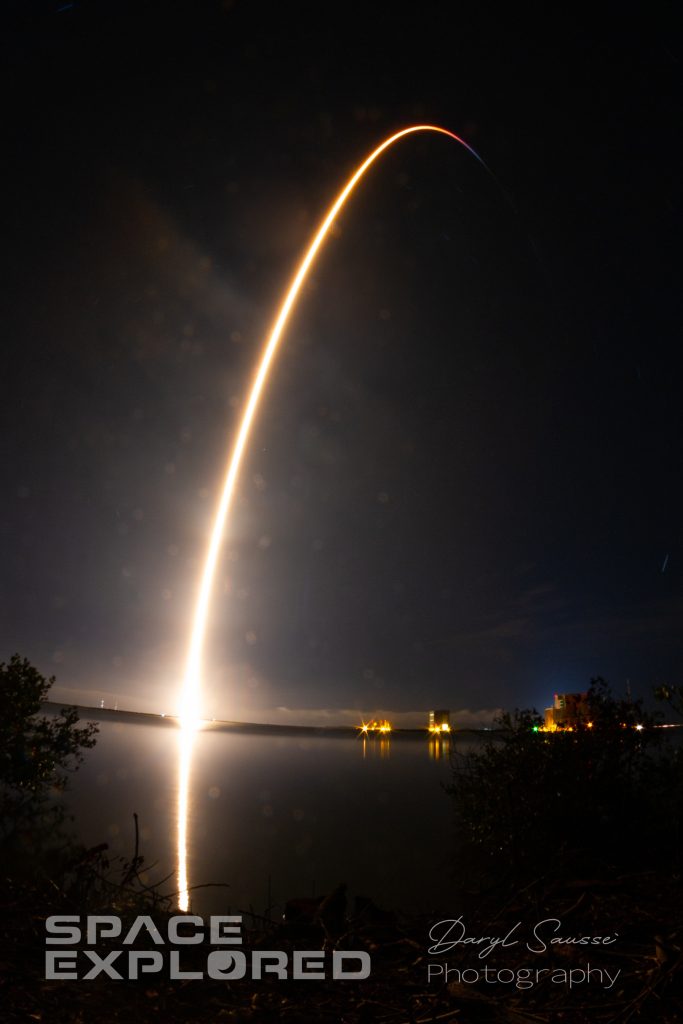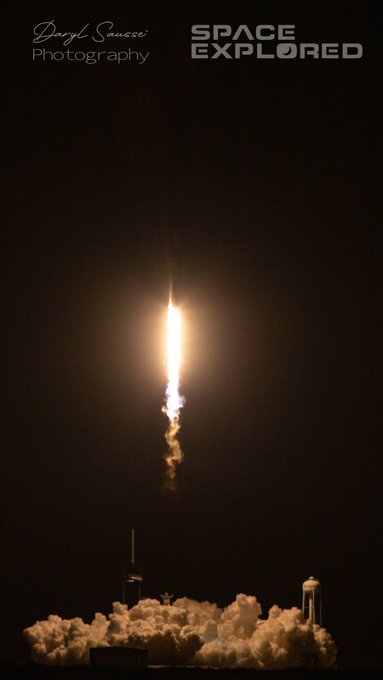
At 7:27 p.m. EST on Sunday, SpaceX launched astronauts Mike Hopkins, Victor Glover, Shannon Walker, and Soichi Noguchi into space. This marks the first operational flight of SpaceX’s Crew Dragon capsule and the official transition to commercial transportation to the ISS for NASA. Since the end of the shuttle program in 2011, the U.S. has relied on leasing astronaut seats on Russian rockets to access space.
Liftoff took place at 7:27:17 p.m. on historic LC-39A from Kennedy Space Center. This launch marks the first operational mission for the Commercial Crew Program. The successor to the space shuttle program has been the works since the start of Commercial Crew Development back in 2010.
Over the past decade, SpaceX has gone from launching its first cargo Dragon capsule and dreaming of being able to re-fly a booster to launching its second crewed flight within the same year. SpaceX has launched a total of 20 resupply missions to the ISS, and landing and recovering first stage boosters is now normal for Elon Musk’s space exploration company.
A mission filled with firsts
This flight is a full six-month rotation for the crew on the International Space Station. This will be the longest duration the new Crew Dragon capsule will be in space. Cargo Dragon missions stay on board for about a month, and their DM-2 mission lasted about 63 days in space. This was the first of six commercial flights NASA has planned for the Commercial Crew Program so far.
Crew-1 has so far been filled with many other first including:
- The first flight of the NASA-certified commercial system designed for crew transportation
- The first international crew of four to launch on an American commercial spacecraft
- The first time the space station’s long duration expedition crew size will increase from six to seven crew members, which will add to more crew time available for research
- The first time the Federal Aviation Administration (FAA) has licensed a human orbital spaceflight launch
- The first Black full time ISS crew member
- The first flight of a Space Force astronaut once Mike Hopkins is sworn in
The name of this history-making capsule is Resilience, named for the dedicated crew from NASA and SpaceX that made this mission happen during a global pandemic. The name also shows that no matter what the adversity, when we do things together, anything is possible.
“I could not be more proud of the work we’ve done here today, Falcon 9 looked great, Dragon was dropped off into a beautiful orbit about 12 minutes into the mission,”
Gwynne Shotwell, president and chief operating officer of SpaceX
The capsule Resilience, flying on top of a brand new Falcon 9 booster, has so far performed nominally. The booster launched on time with no holds in the countdown. The weather that was a cause for concern earlier in the countdown cleared up for perfect launch conditions, and the booster landed flawlessly on the SpaceX droneship Just Read the Instructions positioned in the Atlantic Ocean.
Slight issues shown on the capsule
Only a couple of hiccups were seen on Resilience during the flight. During hatch closure prior to liftoff, the hatch failed a leak test resulting in the need for the checkout crew to reopen the hatch and check the seal. While checking the seal, the checkout crew found some FOD (Foreign Object Debris) on the seal. The team also repositioned part of the seal, then attempted to re-close the hatch. The hatched passed the second leak test and the countdown was not affected.
While on orbit, the capsule showed issues with both propellent pump heaters for the Draco thrusters and temperature control system. Both were minor issues and not time sensitive. Crewed launches are known for ground engineers to be extra careful, and every issue is investigated fully no matter how minor it may be.
The issue for the temperature control system was caused simply by starting up a process when the temperature inside the capsule was too low. After waiting for the inside to warm up a little, they were able to start the process again.

For the heaters, three out of four heaters in one grouping of thrusters shut down due to a resistance limit being hit. These heaters were not flown on DM-1 or DM-2 because they are only needed for long duration flights. This could have been a serious problem if one more heater couldn’t have been turned on since flight rules state two heaters need to be operational at all times.
It was determined that the resistance limit was very conservative so after raising it and starting them back up, they were determined to be functioning nominally.
Currently, the four astronauts of SpaceX’s Crew-1 mission are on track to dock with the International Space Station around 11 p.m. EST on Monday night. Stay tuned to Space Explored for updates throughout the day as Crew-1 makes their way to the ISS.
Updates
Boost Burn: At 11:20:27 AM EST teams at SpaceX fired the Draco thrusters for roughly 97 seconds to raise the Dragon’s orbit. This burn raised the orbit to just about 10 km short of the ISS’s orbit.
Crew Wake Up: At 12:21 PM EST the crew of Resilience woke up to “In the Air Tonight” by Phil Collins.
Enjoy reading Space Explored?
Help others find us by following on Apple News and Google News. Be sure to check us out on YouTube, Twitter, Facebook, and Instagram, join our Discord!
FTC: We use income earning auto affiliate links. More.



Comments